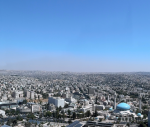You are here
Mapping Middle East peace prospects
May 06,2024 - Last updated at May 06,2024
There is no doubt that the Biden administration is concentrating on brokering a deal in the Middle East, as clearly stated by US Secretary of State Blinken during his recent visit to Saudi Arabia. Achieving regional peace is now the primary objective of this administration’s Middle Eastern policy. However, what was a complex task before October 7 has become significantly more complicated. Achieving peace now requires, first and foremost, reaching a ceasefire in the war in Gaza and preparing for the post-war phase, which includes humanitarian rescue efforts, the rebuilding of Gaza and resolving the issue of governance in the region.
US involvement will undoubtedly intensify, particularly with the American port on the shores of Gaza expected to play a major role in the humanitarian phase for an extended period. Simultaneously, Saudi Arabia’s insistence that the Palestinian issue is not overlooked in any deal will further complicate matters for the Biden administration as it attempts to craft a peace package that satisfies all parties.
Efforts to secure the release of Israeli hostages by brokering a longer truce may not be feasible. Recent information has cast doubt on Hamas’s capacity to release all hostages due to various factors, including its limited influence and ability to trace those holding hostages in Gaza. In addition, there are internal conflicts within Hamas branches spanning from Doha to Beirut to Gaza. Some reports suggest that while some hostages may no longer be alive, at least 22 could potentially be released in a deal.
These developments place increased pressure on the Israeli government from the US administration, which is racing against time to achieve tangible results before the upcoming presidential elections. From an Israeli perspective, any deal that does not address security concerns, particularly regarding control over the borders of Rafah, may not be acceptable from a military and security standpoint. After months of war, it may be challenging to halt hostilities without achieving an outcome that guarantees long-term stability.
While political and diplomatic efforts to promote post-Gaza war solutions are crucial, significant questions remain unanswered. These include the identity of Gaza’s governor in the post-Hamas phase. Furthermore, if Hamas loses much of its military capacity, the movement may shift its focus to politics and rebuilding its internal structure. Reports of Hamas considering relocation from Qatar to different locations suggest a strategic repositioning of the movement that seeks to retain its political structure.














Add new comment